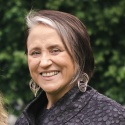Bridging Gaps, Building Relationships: Understanding Indigenous Humanities Data in the Context of Open Science
This panel considers the current priorities and potential future opportunities for humanities scholars working with Indigenous data. Specifically, we are interested in highlighting ways of increasing the accessibility and discoverability of data associated with The People and the Text (TPatT), a research project and website housed at Simon Fraser University devoted to the collection and study of neglected and forgotten works of Indigenous literatures in Canada. Our database, which is housed in the Alliance-hosted platform CWRC (relaunching soon as the Collaboratory for Writing and Research on Culture, PI Susan Brown), is currently undergoing a significant redeployment to make our database more accessible and stable. One of TPatT’s founding priorities is making this writing discoverable and accessible to non-academic audiences as well as scholarly communities through digital texts, videos, teaching tools, and resources that include collections such as the Canadiana and Héritage databases. Our panel discussion responds specifically to CRKN’s call for proposals that address issues of open access and digital heritage, exploring the challenges of “openness” in relation to Indigenous data and cultural protocols. Cree-Métis scholar Deanna Reder will provide an overview of the project, outlining the types of data represented in our collection and highlighting key partnerships that are helping ensure the long-term preservation of our data. Settler scholar Alix Shield considers the connections between open science and Indigenous humanities data, and discusses the potential for EDIA initiatives within the current TPatT database. Susan Glover, a settler and researcher in Tkaronto, discusses how the Voices of Ancestors (VoA) database, a collection of 18th- and 19th-century Indigenous authors and texts and part of TPatT, responds to challenges set out by the Truth & Reconciliation Commission’s “Calls to Action” and presents the potential to bridge metadata gaps through future partnerships.



